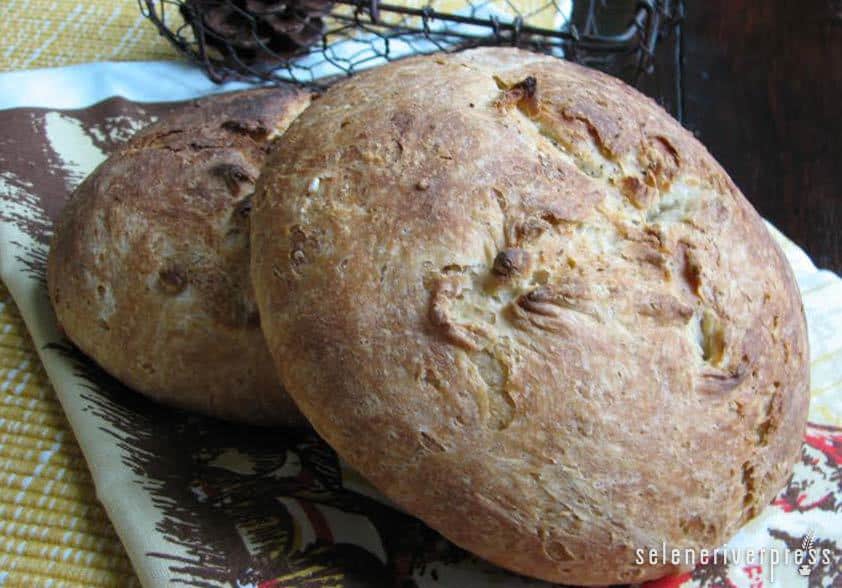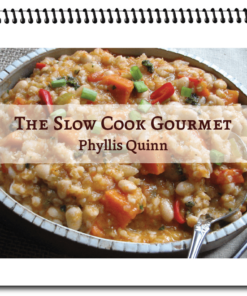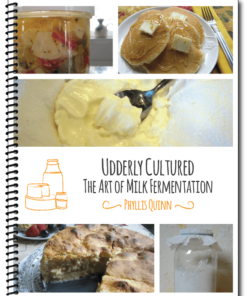Bread of Tuscany, Umbria, and Marche, Regions of Proud Traditions
Ask Chef Phyllis:
Is it possible to find a good tasting, really crusty bread like the Pane Toscano that we had in Italy? I understand the reason for a no-salt bread in the past was about money. Flour and water are cheap, but salt was expensive (or taxed). Then we heard a story from some tourists in Liguria that it was really all about their highly salted meats and cheeses—they don’t need salt in their bread for this reason, and that keeps this kind of bread alive and popular. I think the un-salted bread tastes right to them now. Do you know of a good Tuscan bread recipe where I can add just a little salt if I want?
—Dorethea Heath, Texarkana, Texas
It just so happens, Dorethea, that the host of the Cooking Channel’s Extra Virgin, Gabriele Corcos, took his wife (actress Debi Mazar) and their girls on a Tuscan adventure to explore the food of local artisans.
One of their stops was at a farm where a baker was making the region’s no-salt bread. Inside a stone barn, there was a sponge/ferment resting in a wooden bin and collecting all kinds of wild yeast. The baker added most of that sponge to another dough to form a rather large, round loaf. It was placed on a peel, tossed into a glowing wood-fired open oven, and baked to perfection. A divine-looking loaf emerged! It was Pane Toscano, a no-salt bread of the region, including the provinces of Umbria and Marche. (I didn’t know it, but these provinces use no-salt bread too.)
Many years ago, my maternal grandfather, Nicola, would mention a salt-free bread while making his modest lunch. He said when he was a boy in Italy, he loved this bread and had it often. He mostly ate it in the summer and fall, using up any stale bread and ripe vegetables from the garden to make a panzanella salad. He said the only time he had the bread fresh was when he had a slice dipped in his father’s leftover meat juices at dinner. I haven’t given a lot of thought to Poppa’s bread until now.
Poppa lived with his wife, my grandmother, on Mott Street in Little Italy, on the third floor of a fourth-story walk-up. The bake shop, where his favorite bread was sold, was on the street level three stories beneath them. (Shops lined the streets of New York City’s tenements in the 1930s and 40s.)
After he became a widower, Poppa moved in with us in the “almost country” Bronx. The only store to carry “his” bread was a specialty grocer on Castle Hill Avenue called the Italian Village. My assignment as the oldest granddaughter was to go there every day before noon to secure Poppa’s bread. And I can tell you, the “noon” rule didn’t always guarantee the loaf.
But I loved going to that store. It was a feast for the eyes and the nose! Every Friday, this same grocer would have fresh cheese in a basket soaking in whey on the counter. And at Easter time (Good Friday and Shroud Saturday), they had wheels of pizza rustica and pizza d’grano (sweet wheat pie) for sale. However, they wouldn’t be there for long as they were quickly bought up by busy grannies getting ready for the holiday. But that’s another post.
Here’s a moment in time to share: On summer afternoons, under a shady grapevine in our Bronx backyard, when the Angelus bells were ringing, it was time to think about lunch. Almost ceremoniously, Poppa cut his bread into a large bowl and drizzled with it with some good olive oil, homemade wine vinegar, and shaved Parmesan or Romano cheese. He would also add juicy, garden-fresh tomatoes whenever we had them. My kid sister was there too, in a playpen, only a year old. I was nine, so the best part was Poppa sharing the bread lunch with me. It was very special.
Gabriele from Extra Virgin craved this special, familiar Pane Toscano when he was home in New York City. He complained about its absence from local Brooklyn bakeries, so eventually he decided to master his own recipe. It took him nearly three years of trial and error, but now you can find it in his cookbook. I’m a big fan.
So, what is it about this bread? For anyone on a no-salt or low-salt restricted diet, which sounds like a punishment to me, this bread is a reward!
I eagerly topped it first with savories like roasted peppers and roasted garlic on ricotta. Never missed the salt. And then I tried the bread with sweet toppings: a fresh fig, orange slices drizzled with honey, and both were more than good.
For my recent blog posts, I’ve researched different approaches to ancient breads (Breads of the World). I hope you’ve enjoyed reading about them.
Pane Toscano
I made Pane Toscano following the recipe below. You can find many other recipes today for this same bread, such as the one from The Bread Baker’s Apprentice that uses a flour paste instead of a sponge.
Ingredients
For the sponge (start the day before):
¼ teaspoon yeast
⅔ cup warm (not hot) non-chlorinated water
⅓ cup rye flour
1 cup white whole wheat flour (I use King Arthur)
For the dough:
2½ teaspoons yeast
1⅓ cups room temperature water
3¾ or more cups flour (use half whole wheat flour for a rustic loaf)
2 tablespoons olive oil
Instructions
- The day before you plan to make the bread, start your sponge: Mix all ingredients in a medium bowl. If desired, add 1 pinch sea salt (the amount that fits between your fingers). Cover with a tea towel and let sit overnight.
- The next morning, place the water in a large bowl. Add 2½ teaspoons yeast and the sponge you made the day before.
- Slowly add the flour a little at a time. Next, add the olive oil and mix thoroughly. Use the dough hook on your standing mixer until all is incorporated, about 2 minutes. Alternately, knead by hand for 5 minutes until smooth.
- Place in a greased bowl. Cover and set in a warm place to rise until doubled in size, about 1 hour. Divide in half.
- Gently de-gas (remove bubbles). Shape into 2 loaves, turning the dough upon itself into smooth balls. Cover with plastic wrap and place on a parchment paper-lined baking sheet. Let loaves rise again for about 45–60 minutes.
- Preheat oven to 500°F.
- Gently cut an X on the top of each loaf. Place in the oven for 15 minutes, then lower heat to 400°F. Continue baking for 30 minutes, or until loaves sound hollow when tapped. Cool at least for 40 minutes before slicing or eating.
Chef’s tip: This bread does not have a sweet taste, but it does have a sweet aroma that I love. If you have super taste buds, you might be looking for the salt. However, the salted butter I served with the bread was enough to fill the mouth with flavor. The proof is in the tasting.
Image from Phyllis Quinn.





